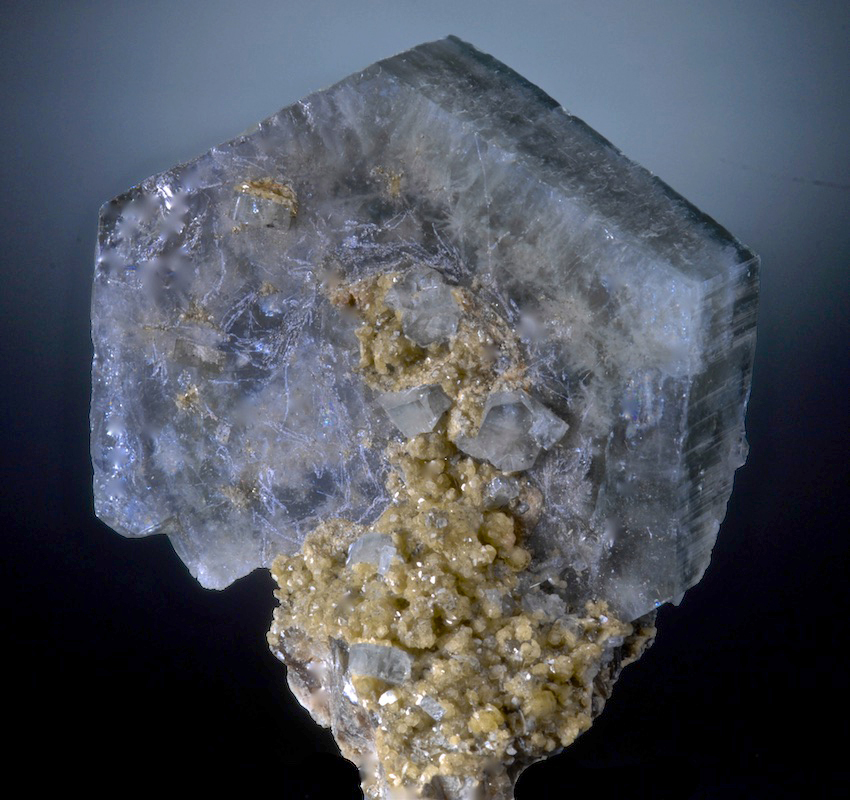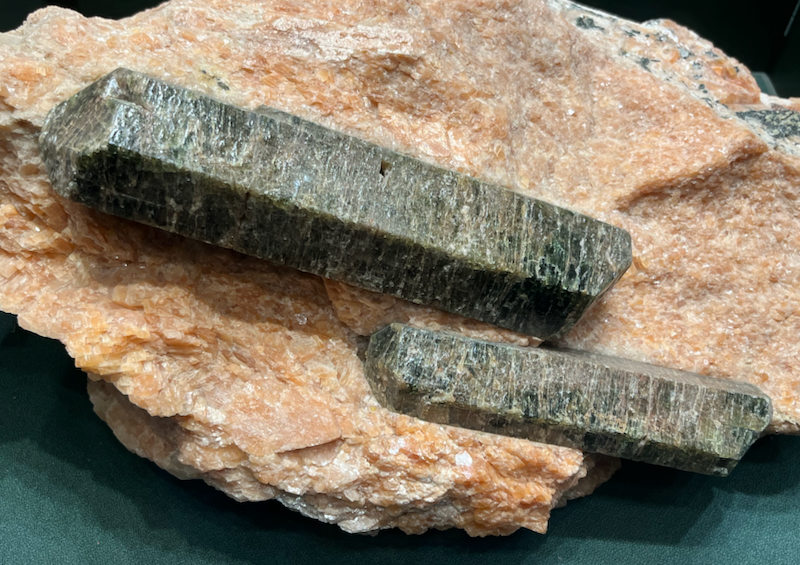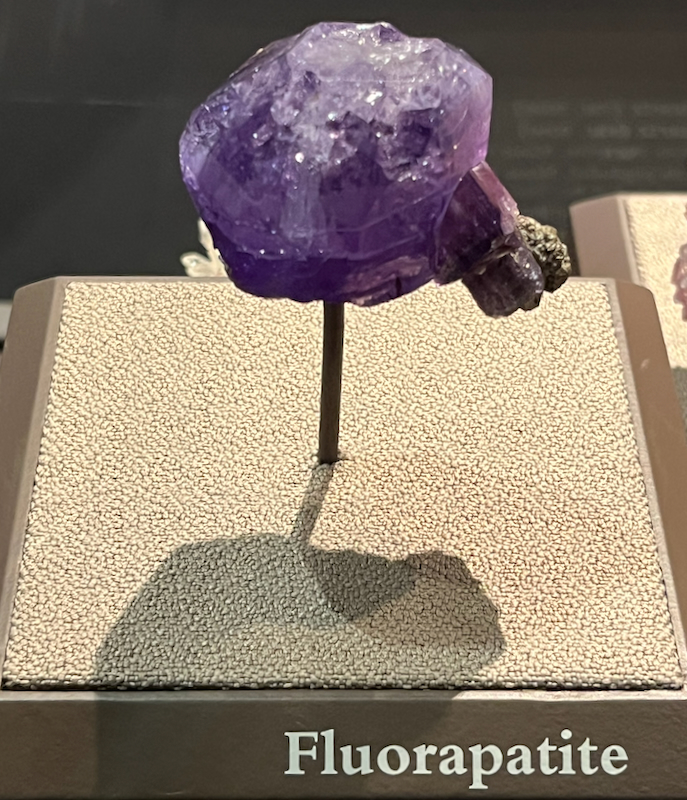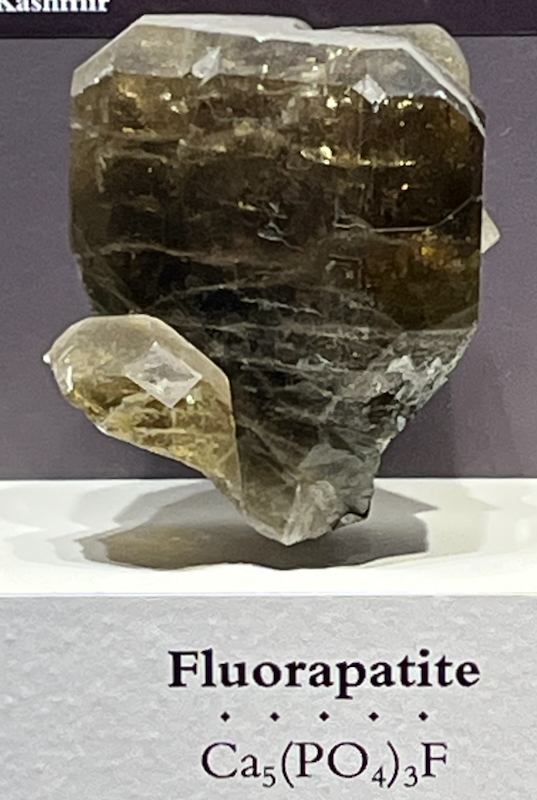Apatite
Apatite is one of the most common phosphate minerals, which means one of its main ingredients is phosphorus, and that’s one of the main ingredients in fertilizer. As a result, powdered apatite finds its way onto many farm fields. Surprisingly, apatite also occurs at the other end of the food process—your mouth! Your teeth are made of apatite, and when you use a fluoride toothpaste or mouthwash, you help to convert the surface of your teeth from one kind of apatite, hydroxylapatite, to a stronger kind of apatite called fluorapatite. Another type of apatite called manganapatite, which has manganese in it, is known for glowing orange like a hot coal in ultraviolet light. When it’s not in your teeth or spread on a field, apatite can be a lovely gemstone that occurs in several different colors. You can find apatites in yellow, green, blue, pink, red, and gray, but the most valuable apatites are a deep purple color. It’s not the hardest gemstone, being softer than quartz, but its hardness is considered special because Mohs used apatite as the standard for the number 5 on his hardness scale.
| Formula | Group or Type | Shape | Hardness | Specific Gravity | Streak | Luster |
|---|---|---|---|---|---|---|
| Ca5(PO4)3(Cl,F,OH) | — | Hexagonal | 5 | 3.1–3.3 | White | Vitreous to subresinous |



